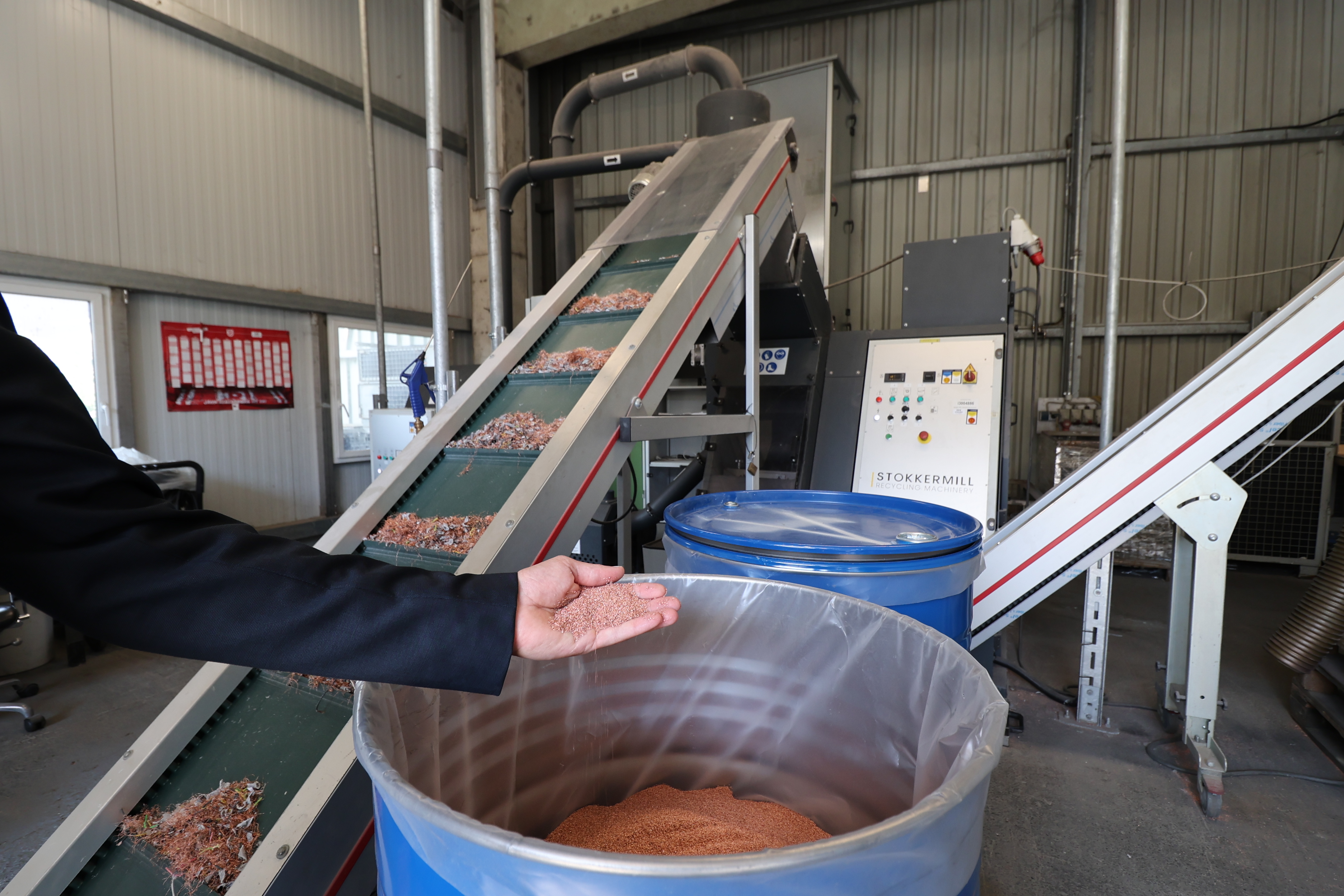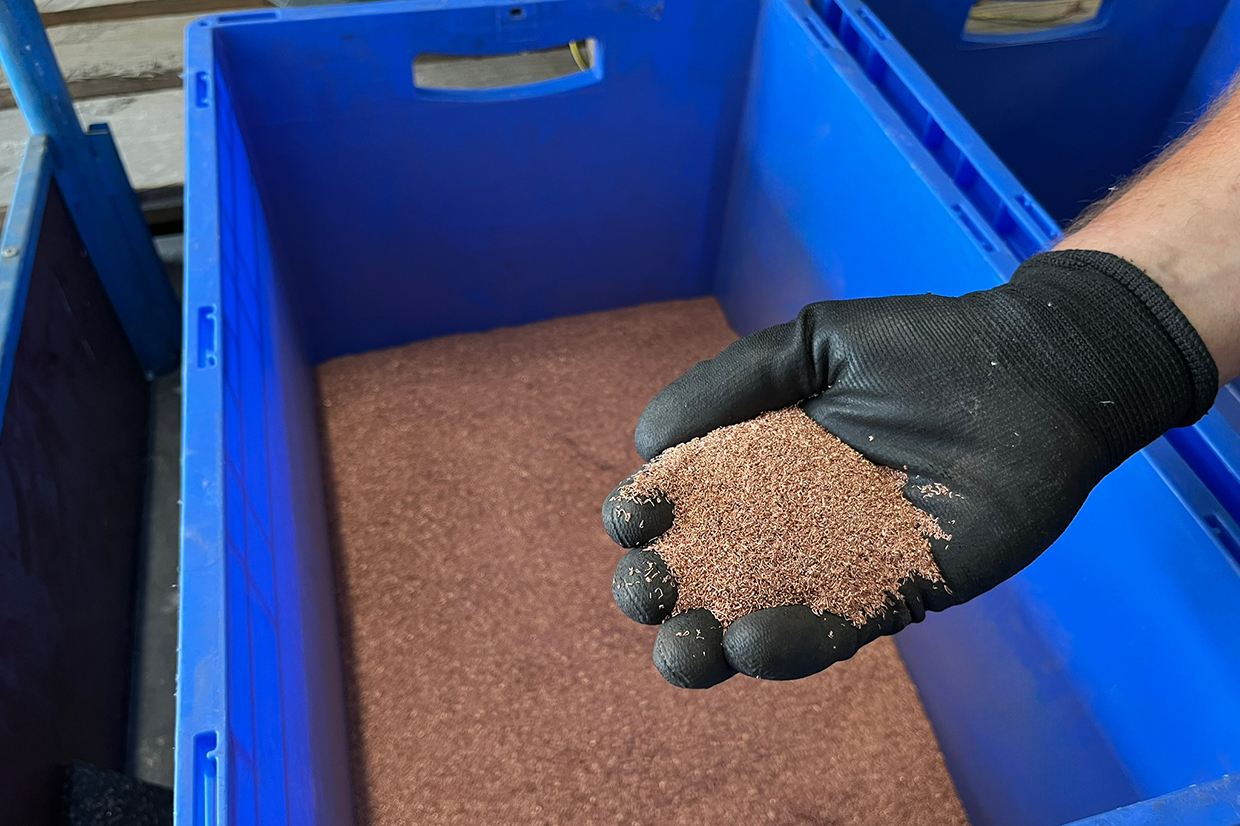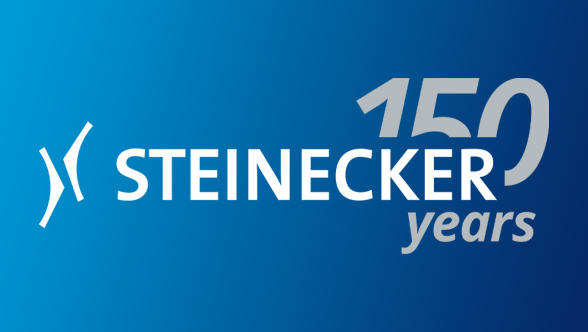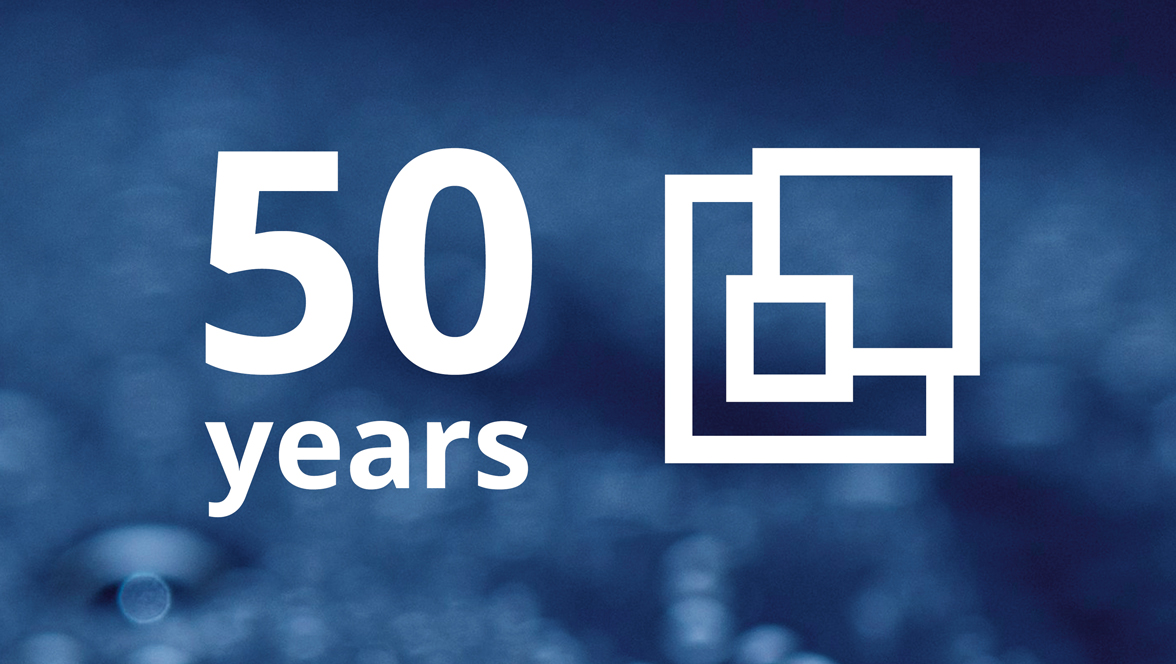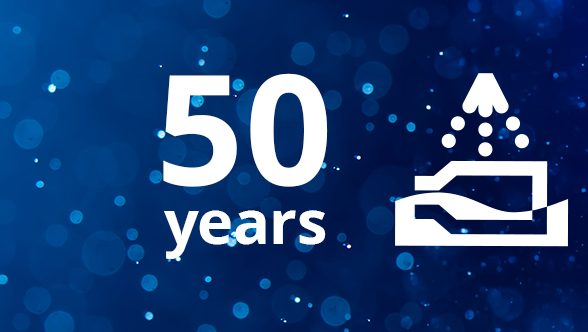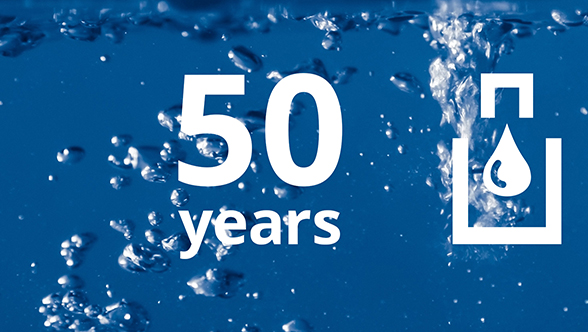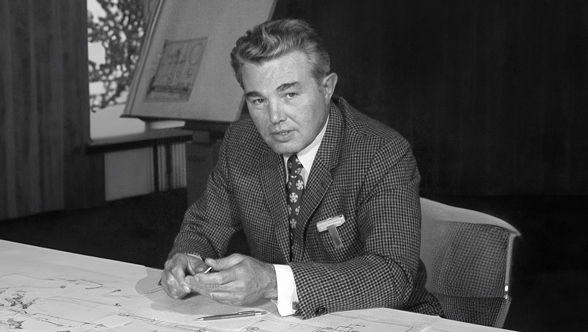A loud jolt is accompanied by a slight tremor in the office of the recycling yard as the floor shakes – and the display indicator on the wall immediately jumps from zero to 16,530 kg. It is connected to the truck scales embedded in the entry into the yard. For Robert Huber and his team at the recycling yard, it is one of the most important tools they have, because it lets them know exactly what quantities of the various waste materials are leaving the plant.
The team at the Krones recycling yard is primarily responsible for managing the waste materials that are generated at the Krones plant in Neutraubling. But not only this, every effort is also made to get as much as possible out of the waste, which ranges from metal scraps to coffee cups. These additional steps can really pay off for Krones – and for the planet.
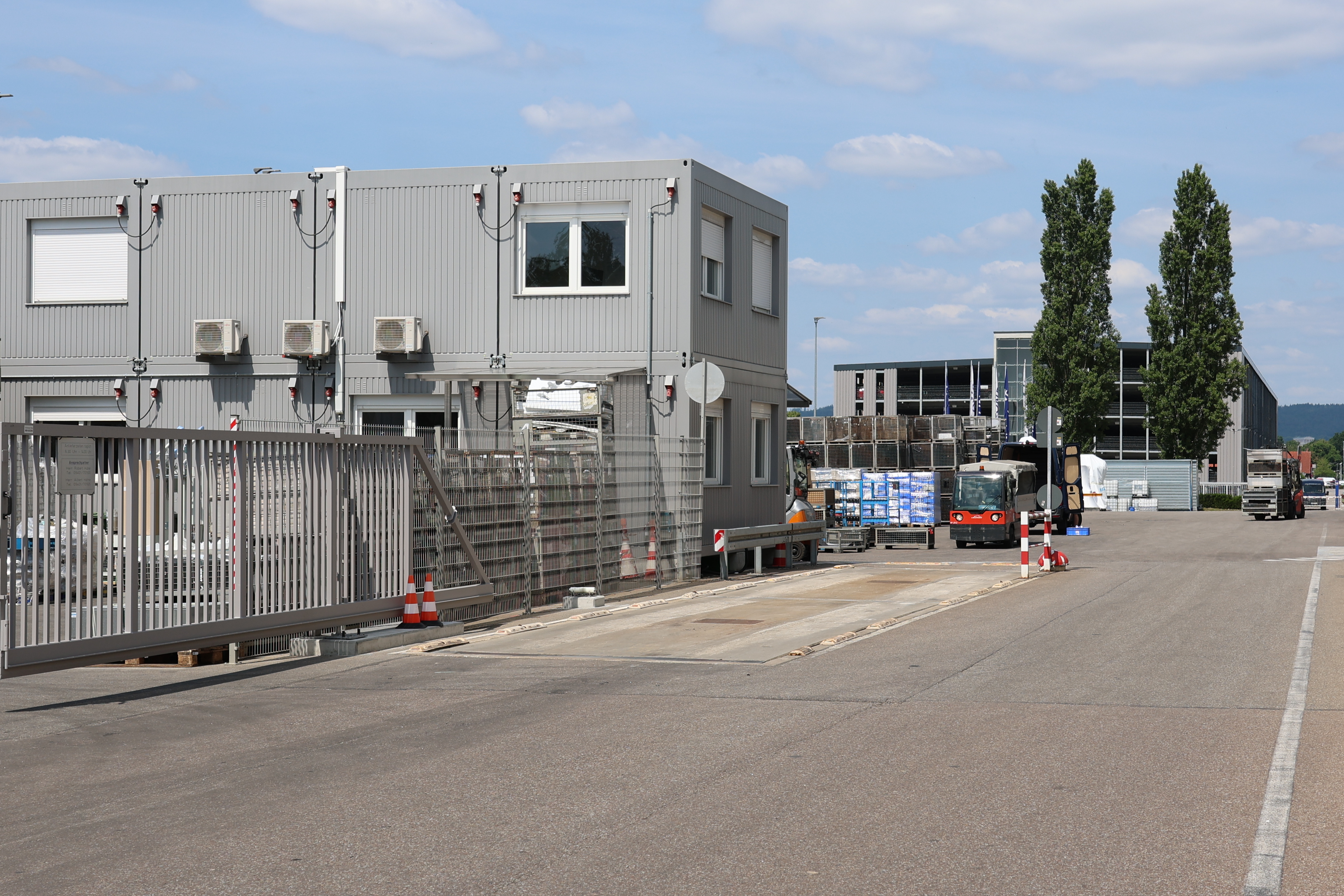
About 1,300 tonnes of residual waste pass across these scales in the Neutraubling plant every year. And that is just one of around 140 types of waste that leave the grounds day in, day out – bound for incineration plants, landfill, recycling companies or raw materials buyers, as Christian Sietan, who heads up Internal Logistics, Goods Receiving, Returns and Recycling, explains.
There is therefore clearly plenty to do – but the commitment and effort are worthwhile, because the way in which waste disposal is handled at the Neutraubling site is proof of how Krones is able to reconcile sustainability goals with commercial priorities thanks to a transparent and careful approach to dealing with waste materials. It makes sense for the yard to be treated as part of internal logistics in the organisational chart, because the Neutraubling plant generates huge quantities of many different types of waste, not just through its workforce of around 8,000 but also thanks to the enormous amount of goods it produces. Logistical skills are essential if this is all to be kept under control.
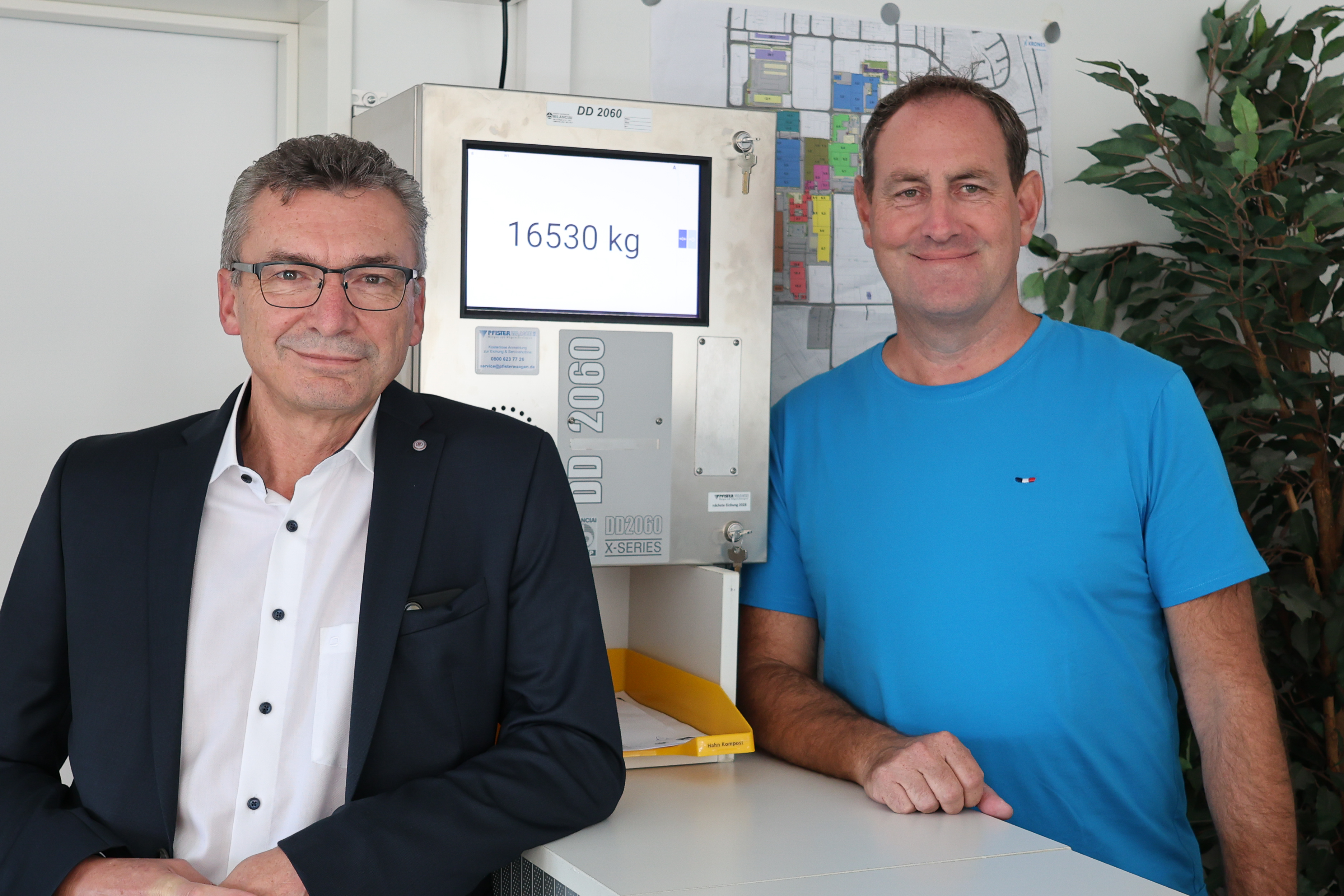
Admin, paper and digitalization
To ensure that it is clear which waste comes from which part of the plant, all loads must be appropriately labelled. While the team used to do this with hand-written transport notes, today communication is embedded in the Intralogistics system to help improve transparency and deliver more streamlined processes. Robert Huber tells us of another labour-saving development: “Some containers are fitted with smart technology that automatically generates a collection order for the disposal company as soon as the container reaches a certain fill quantity.”
The handover to hauliers or disposal companies marks the start of the next administrative step in the office of the recycling yard. This is because commercial waste disposal in Germany is strictly regulated, with a dense network of statutory regulations and requirements for producers. “The time spent on admin in waste disposal is enormous”, agree Robert Huber and Christian Sietan. They are familiar with the extensive rules and regulations, the relevant laws and instructions such as the ADR (Agreement concerning the International Carriage of Dangerous Goods by Road) and the German Waste Management and Product Recycling Act (Kreislaufwirtschaftsgesetz, KrWG). When it comes to the disposal of e.g. hazardous substances such as batteries, chemicals or oils, the yard team is required to ‘sign’ digital shipping and delivery notes with a digital signature card. This ensures transparency across the rest of the disposal process beyond the gates of the Krones site. And: But that is not all: the signature also guarantees that the freight is loaded correctly and the content is declared properly.
Disposal versus recycling
The recycling yard team knows, however, that the easiest way is not always the best. While waste destined for disposal – such as residual waste and hazardous substances – entails certain costs and administrative time and effort, significant value can still be recovered from what is known as recyclable waste. This requires one thing in particular: sorting.
“There is a simple rule of thumb: The purer a valuable material is when sold, the higher the price it can fetch on the market,” Christian Sietan explains. “So we always need to balance the time and money spent on sorting against the increase in revenue. In other words, the extra step can be worth it. That is why the team in the recycling yard is constantly trying to find the most economic solutions.
The approach pays off
Dismantling plays a central role here. With the support of an external partner, a lot of materials and objects are separated into their different components. This might include electronics, for instance, such as decommissioned monitors, modems and computers, but also control cabinets and machine components.
Another ‘prime dismantler’ on the site is the cable shredding facility, which was taken into operation at the Krones recycling yard in 2022 and allows the pure copper components to be extracted from scrap cables. This roughly doubles the revenue that can be achieved from one tonne of cables. In addition, plastic waste can also be recycled to e.g. generate thermal energy.
Making a valuable contribution to sustainability – the recycling yard
As well as delivering economic benefits, the team's work also improves Krones’ sustainability performance: “If waste is separated and sorted, valuable resources can be put back into the circular economy,” says Robert Huber, adding: “The more recycling we do ourselves in-house, the more control we have over where our recycled valuable materials go. We try to sell them regionally wherever possible in order to cut down on CO2 emissions for transport.”
Some of these aspects can become very important in terms of sustainability ratings. For example, the well-established EcoVadis rating addresses, among other things, waste management. The deciding factors are what measures are taken in relation to handling hazardous materials, the extent to which materials are recycled and waste is reduced as a result, and how waste streams are documented and monitored.
Here, the work carried out by the team at the in-house recycling yard makes a significant contribution to the overall rating of the Krones Group. At the same time, it also helps the company to strengthen its reputation as a dependable and responsible supplier. Our image as a serious and reputable company depends on us leveraging these issues ourselves and optimising our sustainability goals at Krones with an array of finely-detailed processes.
For many customers, these ratings provide the specific information they need to regulate and monitor their own supplier processes. Our EcoVadis scorecard has already been requested by 135 customers. It is something we are proud to show off because it demonstrates – among other things thanks to the efforts of our team at the recycling yard – that Krones is in the top three percent of the industry.
Economic benefits, the circular economy and, of course, the management of waste disposal – that’s what the team in the recycling yard do each day.

